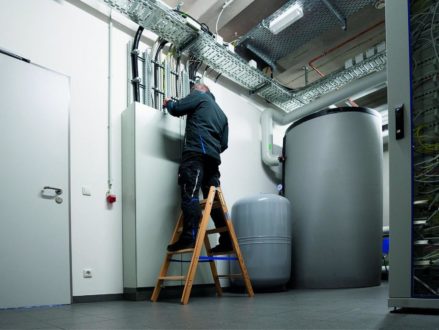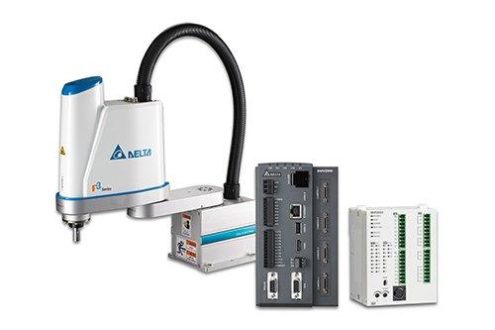Status Quo Sustainability
• No planet, no fashion
• Sustainability needs transparency
• Life cycle assessment: T-shirts made from US cotton
• Clothing made from cotton/synthetic fibre blends in the washing process
• Biodegradability: What happens to dyed cotton?
The Bremen Cotton Exchange and the Fibre Institute Bremen e.V. are inviting participants to the 36th International Cotton Conference Bremen on 29 and 30 September. Under the motto "Cotton Decoded", conference participants will be offered an ambitious programme with up-to-date lectures and lively discussions, both on site in Bremen and via an online conference platform. The events of the day will be rounded off by an exciting evening programme.
The subject of sustainability has become indispensable. In fact, it is now literally woven into the textile chain. For more and more companies, credibly defined sustainability criteria in procurement have long been an integral part of their corporate policy. It is therefore no surprise that the International Cotton Conference should deal comprehensively with this complex of topics. In Bremen we will get specific: How far are we on our way, what have we achieved? How transparent is cotton today? How is the natural fibre reflected in the United Nations’ sustainability goals (SDGs)? On 29 and 30 September, two sessions will discuss aspects of sustainability from different perspectives.
No Planet, no Fashion
For the international fashion group HUGO BOSS, sustainability and corporate activity are in no way contradictory. They are inextricably interlinked. Andreas Streubig, Senior Vice President Global Corporate Responsibility & Public Affairs, will explain in his presentation how HUGO BOSS has implemented sustainability as a key guiding principle of its technology-driven growth strategy defined as “CLAIM 5”. The five claims – ‘Boost Brands’, ‘Product is King’, ‘Lead in Digital’, ‘Rebalance Omnichannel’ and ‘Organise for Growth’ – are based on a holistic and action-oriented understanding of sustainability. In this sense, sustainability is a sign of the future viability of the company, combined with intensive transformation and innovation processes. In order to achieve decisive improvements together, HUGO BOSS is involved in various initiatives such as ZDHC, UNFCCC, FLA and the Textile Partnership.
Sustainability Needs Transparency
Dr Gary Adams is President and CEO of America’s National Cotton Council. As an association, his organisation represents the entire spectrum of the US cotton industry, consisting of farmers, cooperatives, ginners, service providers and retailers. Sustainability aspects play an important role in this. In his presentation, he will offer an overview of the sustainability initiative ‘US Cotton Trust Protocol’. An important aim of the protocol is to achieve continuous, measurable improvement in key sustainability indicators. This data is shared fully transparently with brands and retailers to inform end consumers. The presentation will present the overall scope and structure of the initiative, as well as an overview of the aggregated sustainability data from the participating growers.
Life Cycle Assessment: T-Shirts Made from US Cotton
Roger Gilmartin is a UK technical advisor on the Cotton Council International (CCI) technical team. He will report on the results of a research project dealing with the creation of a life cycle assessment for the manufacture and marketing of t-shirts.
Previously published life cycle assessments have concentrated on what happens within agriculture. This current study includes all the processes that take place in a textile and clothing factory in Bangladesh. It provides well-founded data on the contribution of manufacturing processes to global warming, on the dangers of damage to the ozone layer, on photochemical generation potential, for example summer fog, freshwater ecotoxicity, the formation of acid rain and the excessive accumulation of residues in water, triggered, for example, by the excessive use of pesticides or phosphorus and nitrogen compound.
Sustainability: The technical view
Clothing Made from Cotton/Synthetic Fibre Blends in the Washing Process
In connection with microplastics of textile origin, scientific research is mainly concerned with products made from pure synthetic fibres. But cotton is one of the most commonly used natural fibres in clothing. There are also many mixed fabrics. The lecture by Dr Claudia Heller, former research associate at the University of Applied Sciences in Berlin, now Bosch Siemens Hausgeräte BSH, will focus on the results of a washing study in which a shirt and a t-shirt with different material compositions and fabric constructions were exposed to a repeated household washing process according to a specific standard.
The results show the change in fibre properties due to the influences of detergents, dirt and limescale. The analysis method shows that only a small part of the filter residues in the cascade filtration of the grey water from the washing machine are synthetic fibres and what proportions of cotton fibres, detergents and dirt occur in the household washing process.
Biodegradability: What Happens to Dyed Cotton
Microfibre pollution of the environment is a major problem with many incalculable consequences. Fibres coming out of textiles add to the problem. Much effort has been made over the past four years to study the biodegradation of cotton fibres in the natural environment. In her presentation, Mary Ankeny, Vice President Product Development and Implementation at Cotton Incorporated, USA, will provide information on the results of the biodegradability of dyed and finished cotton textiles in different natural environments. In particular, research was carried out into how chemicals break down that are used to provide colour and special properties to cotton clothing.
Additional Highlights of the Anniversary Week
This year’s International Cotton Conference takes place in a year of celebration for the Bremen Cotton Exchange. The association was founded in 1872 and is celebrating its 150th anniversary. The event is therefore embedded in an entire anniversary week.
The first association and working group meetings will take place in Bremen on 27 and 28 September. These include the International Textile Manufacturers Federation (ITMF), the Discover Natural Fibres Initiative (DNFI), the Industry Association for Finishing – Yarns – Fabrics – Technical Textiles (IVGT), the ICAC Task Force on Commercial Standardisation of Instrument Testing of Cotton (CSITC), a spinning mill and textile seminar given by the Fibre Institute, Cotton Exchange, IVGT and ITMF, and an ICA Bremen Board Meeting. A further highlight is certainly the meeting of the ICAC’s Social, Environmental and Economic Performance of Cotton Production (SEEP) expert working group.
Bremen Cotton Night
On the evening of 29 September, the Bremen Cotton Exchange and the Fibre Institute Bremen invite participants to the popular and well-known Bremen Cotton Night. This year, the event is all about the 150th anniversary of the Bremen Cotton Exchange and is taking place in the Bremen Übersee-Museum (Overseas Museum) for a good reason: At the same time, the gates will open to an attractive exhibition on the cultural history of cotton. Conference participants can celebrate in the large atrium of the museum and also take a guided tour of the exhibition. With good music and good food, it will finally be possible to spin personal networks again and at the same time review the multifaceted world of cotton in an exquisite exhibition.
Venue
This year’s conference is not taking place in the historic town hall of the Hanseatic City of Bremen, but at the Bremen Chamber of Commerce in the immediate vicinity of the Cotton Exchange. The Chamber of Commerce has represented the interests of Bremen’s trade since 1451 and is closely connected to the Bremen Cotton Exchange.
Early-Bird Registration Until 31 August
Registration for the International Cotton Conference has already started and can be made at any time on the conference website www.cotton-conference-bremen.de, where you will also find regularly updated information about the conference.
We will continue to provide information about the International Cotton Conference on 29 and 30 September and the complete programme of the Cotton Week in the form of further press releases and target group-specific newsletters, as well as via our social media channels.
Of course, we cordially invite all interested media representatives to visit the 36th International Cotton Conference. We are happy to support you with accreditation or the selection of suitable discussion and interview partners. We look forward to any form of reporting in the run-up to the conference. We are available for further questions and interviews.
About the Bremen Cotton Exchange
• Founded in 1872 to strengthen the interests of the cotton trade and consumption in Germany, the Bremen Cotton Exchange has now been in the cotton business for 150 years. As an international court of arbitration, the Bremen Cotton Exchange always stands for neutrality.
• We offer various services to our members. Clear and neutral data and analyses are a part of this.
• As the ICA Bremen, together with the International Cotton Association in Liverpool and in cooperation with the Fibre Institute Bremen, we provide the International Quality Testing and Research Centre in Bremen. The Hanseatic city has now become the international centre for cotton testing and research, quality training and certification.
• We represent our members in all the important international bodies in the cotton world.
About the Fibre Institute Bremen e. V. (FIBRE)
• In its 66-years history, the Institute has developed from a cotton testing laboratory into a successful research institute in the fields of future-oriented fibres, technical textiles and fibre composites at the University of Bremen. It deals with basic scientific and application-oriented questions along the entire process chain from fibre production to the manufacturing of fibre composite components and more for the aircraft industry.
• FIBRE’s central international importance in cotton is shown by its work on the international harmonisation of cotton testing [e.g. round tests in cooperation with the ICAC and USDA-AMS], its work in central committees [ICAC Committee on Standardised Instrument Testing of Cotton (CSITC), ITMF Cotton Testing
Bremer Baumwollbörse
Wachtstraße 17-24
28195 Bremen
Telefon: +49 (421) 339-700
Telefax: +49 (421) 339-7033
https://baumwollboerse.de/
Kommunikation und internationale Beziehungen
Telefon: +49 (421) 3397016
E-Mail: hortmeyer@baumwollboerse.de
![]()




